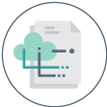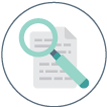When companies manage their information resources effectively, they improve business results while reducing risk and gaining competitive advantage. This requires understanding and building the synergy between information governance and IT governance.
Information governance encompasses the overall strategy for information across the organization. This includes identifying, categorizing, and storing data. It also involves managing information lifecycles, ensuring data security and supporting eDiscovery and regulatory compliance.
IT governance, on the other hand, ensures the technical foundation and support for information governance. By implementing information governance and IT governance in coordination, organizations optimize their use of information assets. At the same time, they improve risk management, ensure regulatory compliance and drive innovation.
Data Management
Data holds tremendous potential to provide insights, improve decision making, and inform strategy. At the same time, the sheer velocity of data poses challenges. Organizations ingest huge quantities of data in various formats from a wide range of sources. But if people cannot find and access quality data when they need it, it holds little value.
IT governance supports data management by providing the tools, policies, and processes to ensure data quality and availability. This includes supporting the classification and storage of data as well as controlling information access and sharing. It also involves enabling effective and responsible archiving and destruction of data.
For example, IT governance establishes the data architecture necessary to ensure that all team members can access accurate information, regardless of their location. It also provides data analytics and visualization tools to enable data exploration and reporting.

Risk Management
Any business activity entails risk that can negatively impact the company’s performance, reputation, and even its bottom line. Insufficient cyber security measures introduce the risk of data breach, for instance. Likewise, natural disasters and ransomware can interrupt business continuity and result in crippling data loss.
Risk management requires IT governance to provide the necessary resources and processes to enable risk identification, analysis, and response. For example, effective IT governance provides for risk assessments to identify potential vulnerabilities of IT systems and processes. It will also include the implementation of strategies and controls to close security gaps moving forward.
Additionally, risk management must include implementing data backup and recovery procedures as part of an overall business continuity strategy. And once the organization has identified risks and initiated mitigation strategies, ongoing IT monitoring enables timely resolution of any issues.
Compliance Management
Effective risk management forms a critical component of overall compliance management. Regulatory compliance plays a critical role in avoiding legal penalties, maintaining trust, and achieving competitive advantage. For many organizations, compliance challenges provide the initial motivation for developing and implementing information governance programs.
Here again, IT governance supports compliance management by providing necessary systems and processes to enable compliance evidence and improvement. This includes policies and procedures around data privacy and security. It also includes a strong reporting component to establish proof of compliance with applicable legislation and industry standards.

Innovation
Data plays an increasingly important role in guiding innovation. For example, by analyzing data from various sources, the company can understand what customers need and value. Data also provides insights into gaps and opportunities in current product offerings. With these insights, the organization can then design and deliver solutions specifically targeted to customer needs.
IT governance supports data-driven innovation by fostering a culture of experimentation and collaboration while providing the necessary resources and guidance. This often includes delivering the guidance and structure to responsibly and successfully leverage emerging technologies such as AI.
Optimize Use of Information Assets with Effective IT Governance
By coordinating IT governance and information governance, organizations increase the value of data assets while reducing risk, achieving compliance, and supporting innovation. This requires ensuring that IT infrastructure and operations are automated and integrated where feasible. It also involves using best practices to enhance information security, quality and availability.
Consider seeking external guidance and support as you develop your governance strategies. For instance, the consultants at eMazzanti and Messaging Architects bring a wealth of experience and tools to help you unlock the power of data for your organization.
eGovernance Cloud Solutions
eGovernance is a Cloud based solution for preserving, discovering and accessing digital data within your email and document storage systems for compliance, audit, security, eDiscovery and warehousing of critical or older data.



